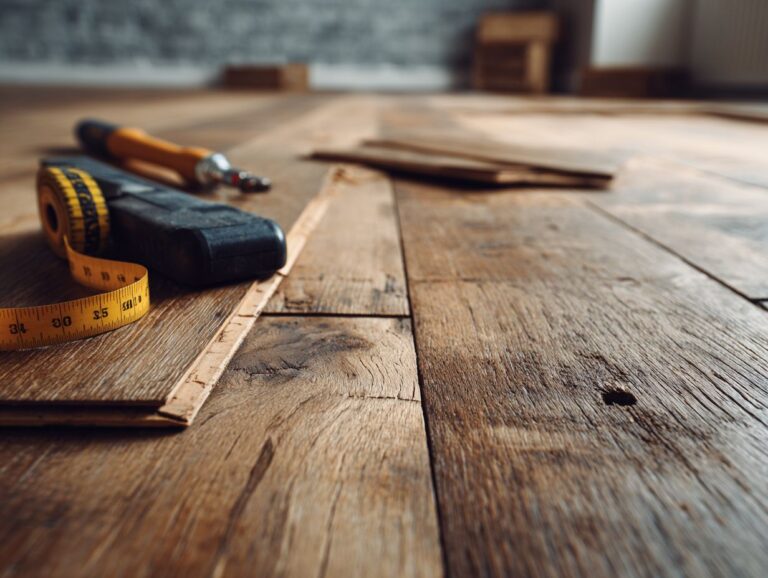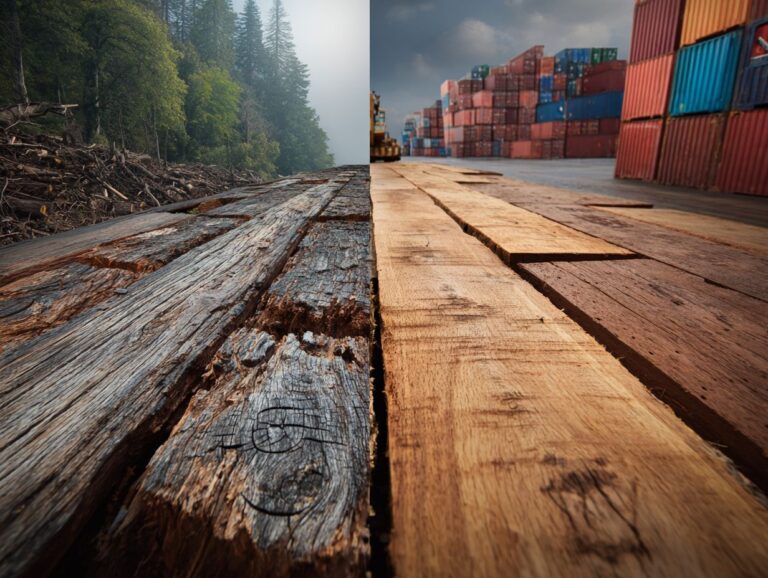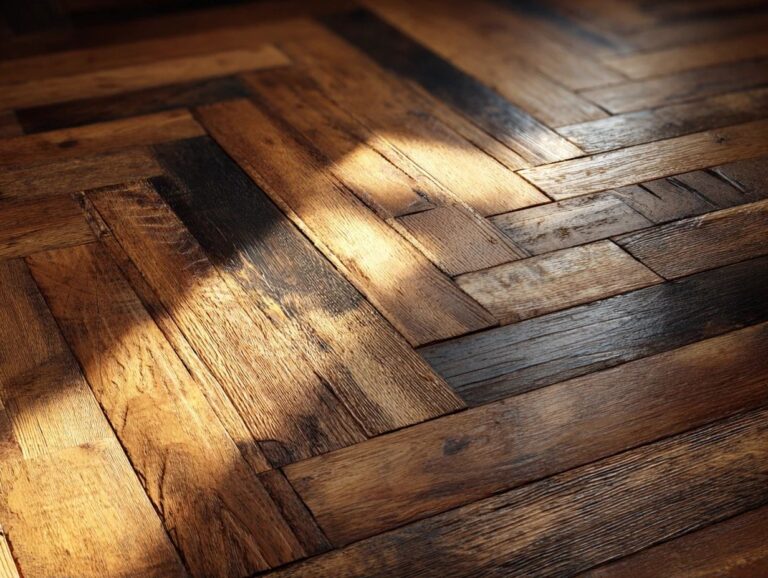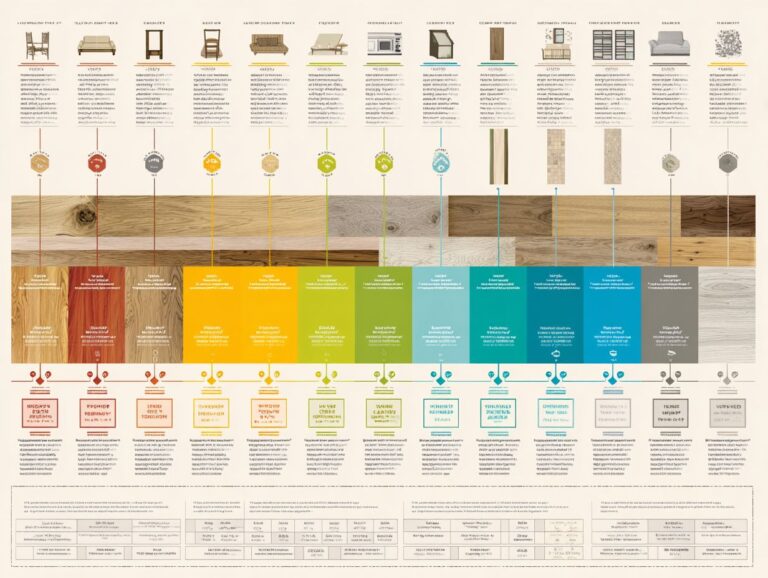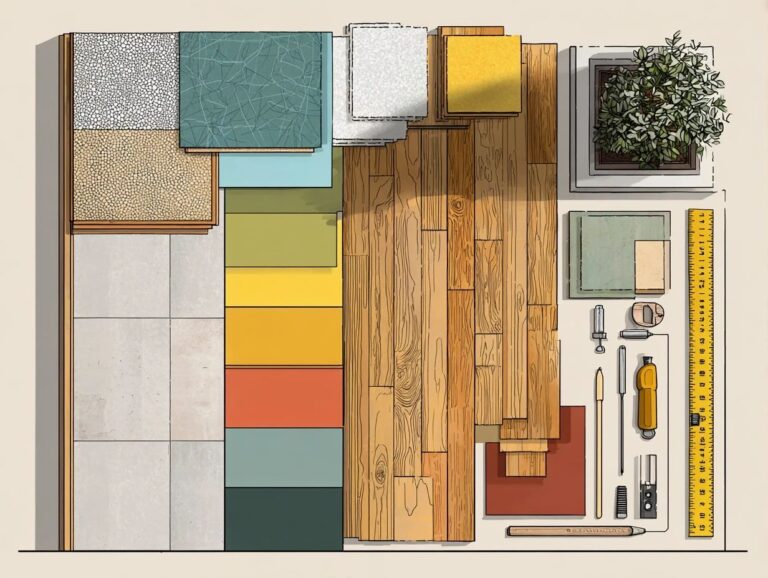WPC vs SPC Vinyl Flooring – Core Differences Explained
Knowing how WPC and SPC vinyl flooring differ can greatly affect your choice when investing in new flooring. Both Luxury Vinyl Tile (LVT) and Luxury Vinyl Plank offer unique benefits, but their core compositions vary significantly. In this article, we will explain these differences to help you choose the best flooring option for your needs, so you can make a well-informed decision that improves your space.
Key Takeaways:
Contents
- Vinyl Flooring Market Overview
- Understanding WPC Vinyl Flooring
- Understanding SPC Vinyl Flooring
- Core Differences Between WPC and SPC
- Choosing the Right Flooring for Your Needs
- Frequently Asked Questions
- What is the difference between WPC and SPC vinyl flooring? WPC (wood plastic composite) and SPC (stone plastic composite) are two types of vinyl flooring that have different core materials. WPC has a wood polymer core, while SPC has a stone polymer core. Which is better, WPC or SPC vinyl flooring?
- Is WPC or SPC vinyl flooring more waterproof?
- Can I install WPC or SPC vinyl flooring in any room?
- Do WPC and SPC vinyl flooring have the same installation process?
- Are there any eco-friendly options for WPC or SPC vinyl flooring?
Definition of Vinyl Flooring
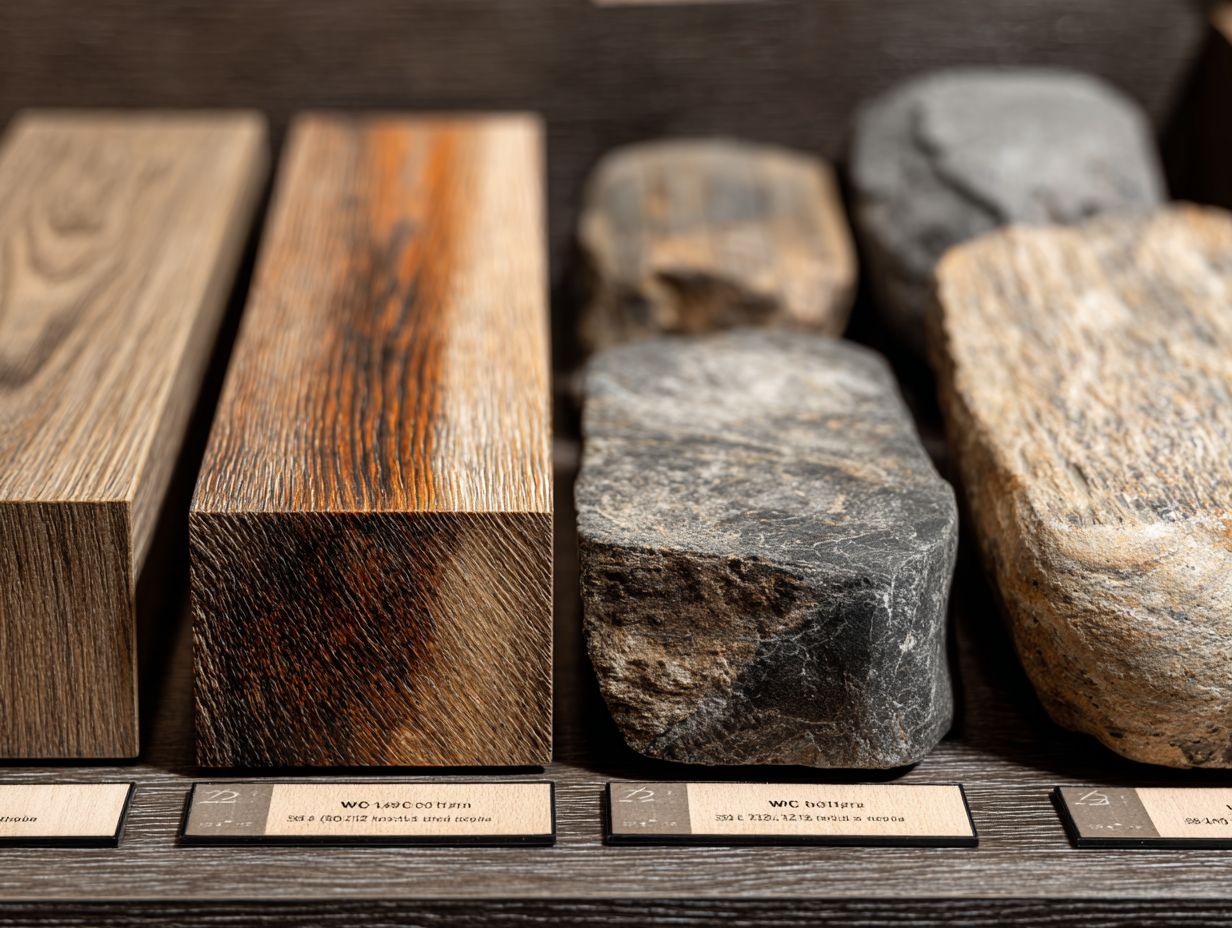
Vinyl flooring is a man-made material mainly made of polyvinyl chloride (PVC). It is tough and easy to care for.
Vinyl flooring is distinct from other options like hardwood or tile due to its water resistance and lower cost. It performs effectively in wet areas, such as bathrooms and kitchens, which makes it a common choice for families. Related insight: Luxury Vinyl Plank (LVP) vs Luxury Vinyl Tile (LVT) Guide
Modern vinyl can mimic the appearance of natural materials, providing aesthetic versatility. To keep it lasting longer, clean it regularly with a damp mop and avoid scrubbing too hard.
Brands like Shaw and Mohawk offer a range of styles, allowing homeowners to find a suitable match for their decor.
Popularity and Uses
The popularity of vinyl flooring has surged, with usage in over 30% of homes and a growing presence in commercial spaces like kitchens and bathrooms.
This growth can be attributed to its affordability, durability, and aesthetic appeal.
Vinyl flooring comes in many styles, copying the look of hardwood, stone, and tile. This makes it suitable for both homes and businesses.
Recent updates in manufacturing methods have improved waterproof features, making it a popular choice in areas with high humidity.
Consumers are increasingly drawn to luxury vinyl options, which combine comfort and elegance, further driving demand and expanding market reach.
Vinyl Flooring Market Overview
Vinyl Flooring Market Overview
Market Size and Growth: Market Valuation
The Vinyl Flooring Market Overview gives information about the financial path of the vinyl flooring industry, showing major growth from 2023 to 2032. Vinyl flooring is a popular choice for homes and businesses due to its toughness, range of styles, and affordability, appealing to many buyers.
Market Size and Growth Data shows a strong increase in market value. Starting with a market size of $39,786.2 million in 2023, this figure is projected to increase substantially over the next decade. By 2027, the market is expected to reach $53,231.0 million, representing a significant surge as the demand for resilient and stylish flooring options continues to rise.
The upward trend doesn’t stop there. By 2032, the market valuation is anticipated to escalate to $76,775.0 million. This growth shows that more and more consumers are choosing vinyl flooring because it can be used in many ways. New technology makes it more attractive, with better textures and easier installation.
- The market is growing each year, showing that the industry is changing to meet what customers want and focusing on sustainable practices.
- As the market grows, opportunities abound for manufacturers and retailers to innovate with new designs, eco-friendly materials, and efficient production processes.
- The demand is particularly high in urban areas, where the need for affordable and durable flooring solutions is paramount due to high foot traffic in residential and commercial properties.
This Vinyl Flooring Market Overview points to a bright outlook for those involved in the industry. With expected growth, businesses can take advantage of this opportunity to grow their product range and gain a bigger portion of this profitable market.
Understanding WPC Vinyl Flooring
Wood Plastic Composite (WPC) flooring is a type of vinyl flooring that mixes wood fibers with PVC, providing increased strength and comfort.
What is WPC?
WPC, which stands for Wood Plastic Composite, is a material used for flooring. It is made from recycled wood and PVC, offering a strong and environmentally friendly choice.
This new material uses recycled materials, which greatly lowers its impact on the environment compared to regular flooring options. For instance, manufacturers often source reclaimed wood fibers from post-consumer products, diverting waste from landfills.
PVC is used to make durable flooring that is simple to maintain, resists water, and remains in good condition for a long time, making it ideal for high-traffic areas.
By choosing WPC, homeowners invest in a sustainable option that resists fading and scratching, providing lasting beauty and durability.
WPC can be easily installed using click-lock systems, simplifying the renovation process.
Components of WPC Flooring
WPC flooring comprises layers, including a dense core layer for stability, a vinyl top layer for visual appeal, and a backing for sound absorption.
The top layer, typically made from PVC or a blend of wood and plastic, provides excellent defense against water and wear, making it ideal for areas with heavy use.
The vinyl top layer adds beauty with different designs and makes it more resistant to scratches and stains.
The backing layer, typically made from foam, reduces noise and adds extra padding, improving comfort and sound quality.
Together, these layers create a flooring solution that seamlessly integrates durability, comfort, and style.
Benefits of WPC Flooring
WPC flooring provides great advantages like better water resistance, more comfort when walking on it, and better insulation.
This makes it an ideal choice for various settings.
For instance, in kitchens and bathrooms, WPC flooring’s moisture resistance prevents warping and damage, ensuring longevity.
In multi-family homes, its sound insulation properties reduce noise transmission, enhancing comfort for residents.
The cushioned feel of WPC flooring is perfect for places where individuals stand for long periods, like in retail or kitchens, helping to alleviate fatigue.
Its unique blend of features caters to diverse needs in both residential and commercial spaces.
Ideal Applications for WPC
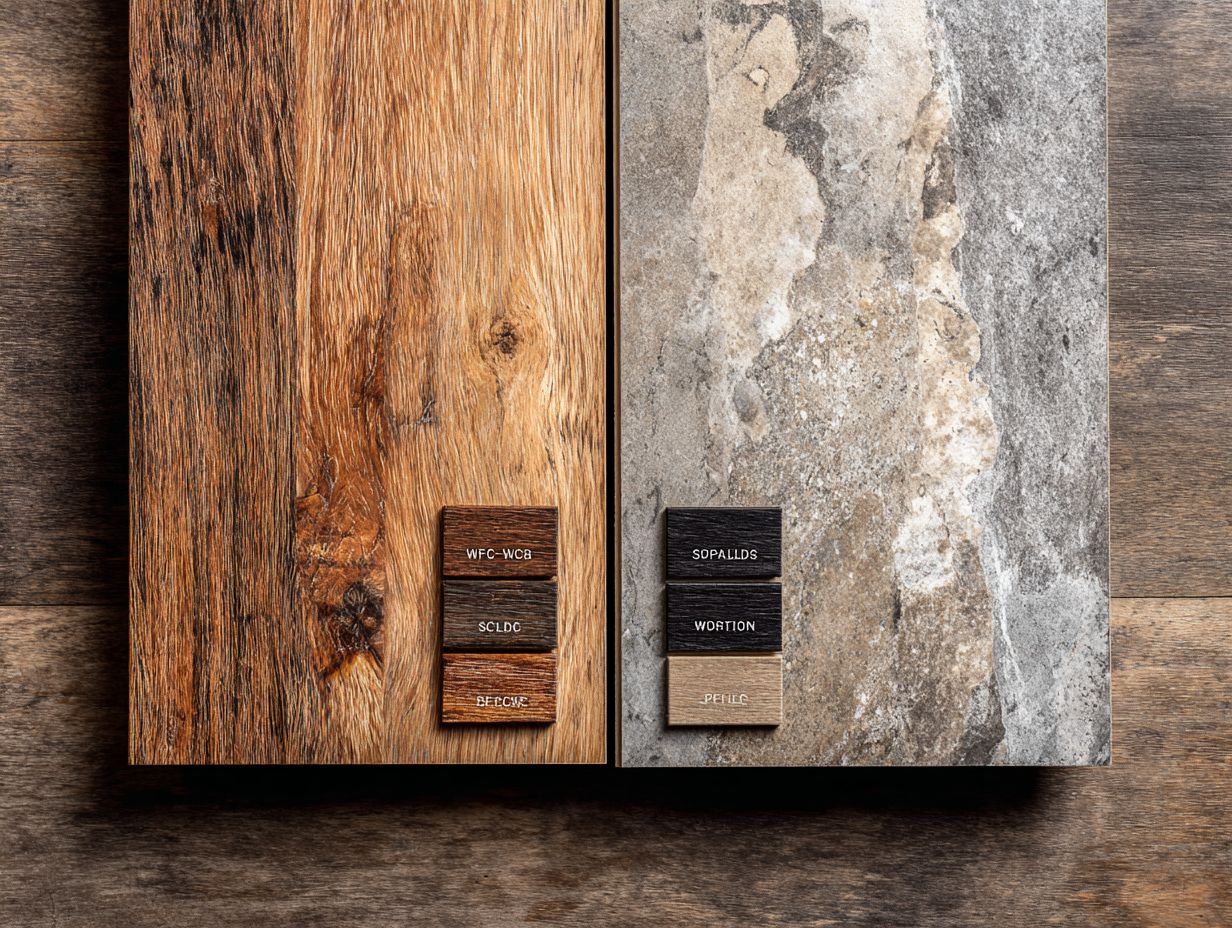
WPC flooring is ideal for high-moisture areas including kitchens, bathrooms, and commercial spaces due to its superior water resistance.
It’s a great choice for basements and laundry rooms where humidity levels can spike. For home use, choose styles with a textured finish to improve grip, especially in wet conditions.
In busy places like cafes or shops, choose WPC flooring with strong durability ratings from brands like CoreTec or Shaw.
Regular cleaning with a damp mop will maintain its appearance, ensuring longevity and comfort in any setting.
Understanding SPC Vinyl Flooring
Stone Plastic Composite (SPC) flooring is a strong choice compared to WPC, using a stone mix center for better strength and steadiness.
What is SPC?
SPC, or Stone Plastic Composite, features a core made from a mixture of limestone and PVC, providing exceptional strength and resistance to wear.
This material’s density makes it far more durable than traditional vinyl flooring, which can be susceptible to scratches and dents.
SPC repels water, so it’s a suitable option for areas with high moisture levels, like bathrooms and kitchens. While traditional vinyl may expand and contract with temperature changes, SPC maintains its shape, ensuring longevity.
For installation, SPC often requires minimal floor preparation, and many types have a click-lock system that simplifies the process, making it a good choice for DIY projects.
Components of SPC Flooring
SPC flooring has a firm core that stops it from expanding or shrinking, which makes it perfect for places where temperatures change a lot.
SPC flooring is built with multiple layers that make it last longer.
The top layer features a wear-resistant PVC surface, which protects against scratches and stains. Below that lies a printed design film offering a wide range of aesthetic choices, from wood to stone looks. The rigid center layer is important because it gives stability and support, while the bottom layer provides padding and reduces noise.
These parts combine to make a floor that holds up well against lots of use and changes in temperature, which works well in homes and businesses.
Benefits of SPC Flooring
SPC flooring offers many benefits, such as being very durable, water-resistant, and easy to maintain.
This makes it an ideal choice for high-traffic areas like kitchens and entryways. For example, SPC flooring can deal with spills, making it helpful for homes with pets.
When installing, you will find a rubber mallet helpful for fitting locks and a utility knife useful for cutting edges.
Cleaning is easy; combining water and vinegar works well to remove daily grime.
In commercial settings, SPC’s resilience helps reduce replacement costs, showcasing its long-term value.
Ideal Applications for SPC
SPC flooring is particularly well-suited for commercial spaces, retail environments, and homes with pets due to its durability and ease of cleaning.
In commercial settings such as restaurants and retail stores, SPC flooring stands out due to its resistance to scratches and stains. In a lively caf, drinks often get spilled, but cleaning them up is simple with a quick wipe.
In homes with pets, SPC flooring’s water-resistant features prevent expensive damage from accidents.
When selecting SPC flooring, look at brands like COREtec or Shaw. They provide many designs and thickness options suitable for areas with a lot of foot traffic.
Core Differences Between WPC and SPC
Knowing the main differences between WPC and SPC flooring can help buyers choose what suits them best. For a deeper understanding of how these options compare, explore our Luxury Vinyl Plank (LVP) vs Luxury Vinyl Tile (LVT) Guide, which elaborates on the unique benefits and applications of various flooring materials.
Construction and Composition
WPC flooring is made with a core of wood and plastic, whereas SPC has a core made of stone and plastic, resulting in key differences in how they perform.
WPC (Wood-Plastic Composite) flooring tends to be softer underfoot, which makes it suitable for homes, particularly in bedrooms and living rooms. Its insulation properties provide warmth and cushion.
SPC (Stone-Plastic Composite) is stronger and handles moisture better, making it perfect for busy areas or places with high humidity, like kitchens and bathrooms.
SPC is often more resistant to temperature fluctuations, allowing installers to lay it in unconditioned spaces without concerns about expansion or contraction.
Durability and Stability
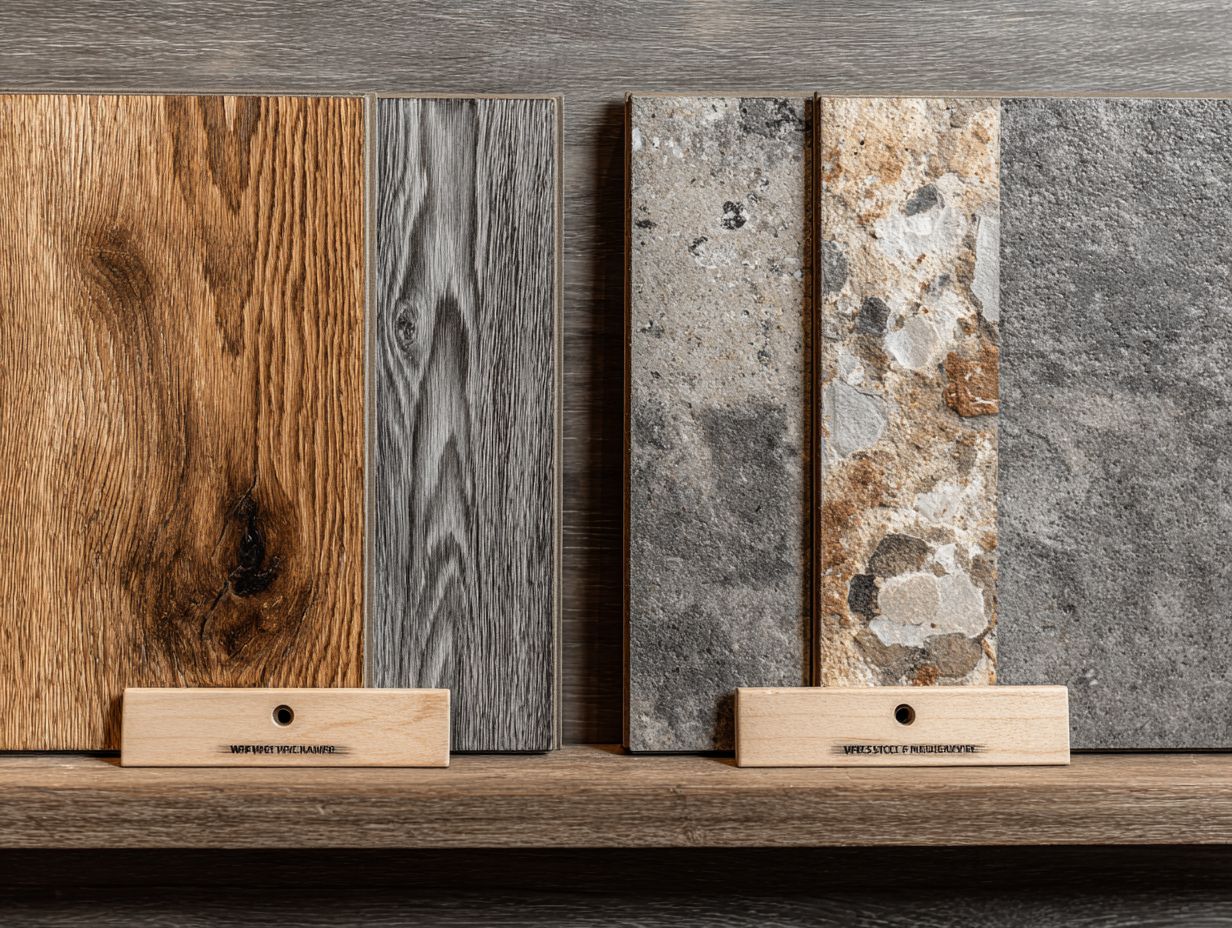
SPC flooring is generally stronger and deals with temperature shifts more effectively than WPC, which makes it a better option for areas with tough conditions.
SPC (Stone Plastic Composite) flooring can withstand temperature fluctuations from -40 degreesF to 140 degreesF, which is particularly beneficial in areas like basements or sunrooms.
In contrast, WPC (Wood Plastic Composite) is more susceptible to warping under extreme heat or cold. Maintenance requirements vary, as SPC is easier to clean and doesn’t require waxing or special treatments, unlike some WPC options that may need periodic sealing.
SPC typically lasts longer, with a lifespan of up to 30 years, whereas WPC may last around 25 years under similar conditions.
Water Resistance
Both WPC and SPC flooring provide excellent water resistance, but SPC holds an edge in moisture-heavy environments due to its non-porous surface.
SPC flooring thrives in areas like basements and bathrooms, where water accumulation is common. The strong core prevents warping and mold, ideal for areas prone to flooding or high humidity.
On the other hand, WPC is well-suited for areas such as kitchens or living rooms, where spills are occasional but not constant. While WPC is still resistant, it is slightly more susceptible to heavy moisture, which can seep into its porous elements over time.
For areas with high moisture, use SPC for the best durability. For various indoor uses, WPC is a good choice.
Comfort and Sound Insulation
WPC flooring tends to be more comfortable underfoot and provides better sound insulation compared to SPC’s denser structure.
This increased comfort makes WPC a popular choice for homes, especially in places like living rooms and bedrooms where people often stand or walk for long periods.
SPC, while more rigid and durable, excels in high-traffic areas such as kitchens or hallways, where its toughness is beneficial.
Homeowners should consider their lifestyle: if comfort and noise reduction are priorities, WPC may be more suitable.
On the other hand, for families with pets or a lot of people walking around, SPC’s durability can be a key reason to choose it.
Installation Processes
Both WPC and SPC are easy to install, but WPC’s click-lock system might be simpler for those who prefer to do it themselves.
To install WPC, start by ensuring you have the required tools: a screwdriver, the included mounting bracket, and the quick-lock clips.
Begin by attaching the mounting bracket to the wall, followed by sliding the clips into place until they click. This usually takes about 30 minutes.
In contrast, SPC installation requires a few more steps. After gathering tools like a level, rubber mallet, and spacers, lay out the panels before fastening with adhesive, which can extend the process to around an hour.
Both systems give good results, but WPC is simple to use, making it great for beginners.
Cost Comparison
WPC flooring usually costs between $3 and $7 for each square foot. In contrast, SPC flooring typically costs between $2 and $5 per square foot, which makes SPC a cheaper choice.
Plus cost, it’s important to consider installation expenses and durability.
For instance, WPC often requires a professional installation fee of about $1-$3 per square foot due to its complex underlayment, whereas SPC can be a DIY-friendly option, sometimes reducing costs.
Brands like AquaShield for WPC and COREtec for SPC provide quality options. Always evaluate what you need-like how much moisture is present and how often people walk on the floor-so you pick the right type of flooring for your area.
Choosing the Right Flooring for Your Needs
Choosing the right flooring means thinking about things like how long it will last, how it looks, and what the room needs.
Factors to Consider
When choosing flooring, consumers should evaluate factors such as durability, maintenance requirements, aesthetic appeal, and budget constraints.
Durability is important for busy areas; for example, hardwood looks nice but can scratch easily, while tile is more resistant.
Maintenance requirements vary significantly-carpet may need frequent cleaning, while vinyl is relatively low-maintenance.
Aesthetic appeal should align with the home’s style; luxurious options like marble may suit traditional homes, whereas concrete complements modern designs.
Consider budget constraints: laminate may provide a cost-effective solution while mimicking more expensive materials.
Considering these elements helps choose flooring that matches both your way of living and design goals.
Best Environments for WPC and SPC
WPC is ideal for residential spaces with moderate moisture, while SPC is best suited for high-traffic commercial areas and moisture-heavy settings.
In homes, the cushioned surface of WPC offers comfort and warmth, making it a great option for living rooms or bedrooms.
For example, a family with kids will like WPC’s ability to handle small spills and daily use. Conversely, SPC’s rigid core structure shines in busy environments like restaurants or retail stores, where durability is essential.
SPC flooring in a coffee shop can handle a lot of foot traffic and is highly water-resistant, which helps it last a long time.
Both choices need to be set up correctly; think about hiring experts to get results that fit your particular needs.
Final Thoughts on WPC vs SPC
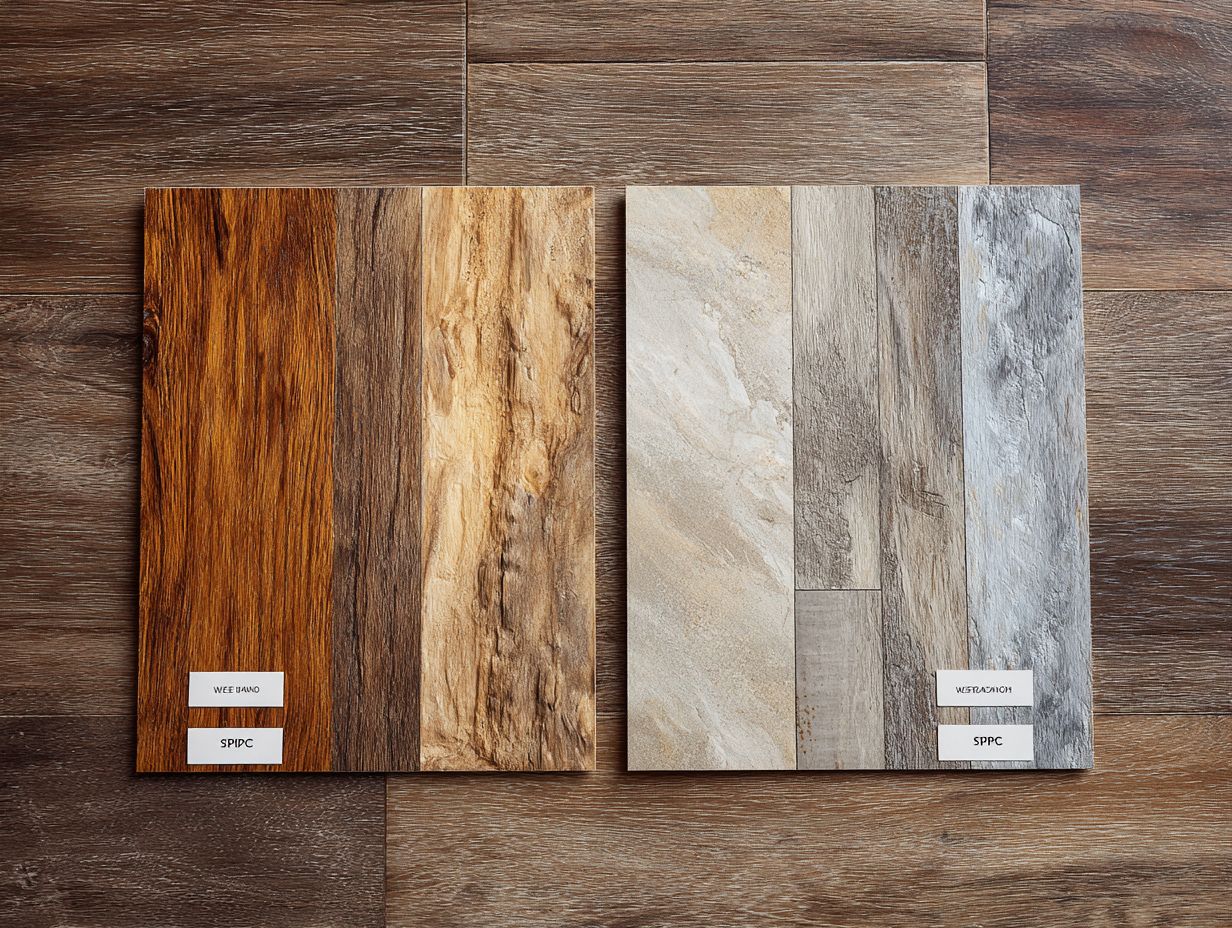
Final considerations between WPC and SPC hinge on environmental factors, personal preferences, and specific use cases in flooring projects.
Both WPC (Wood Plastic Composite) and SPC (Stone Plastic Composite) offer unique advantages depending on your needs. For instance, if you’re prioritizing sound insulation, WPC might be the better choice due to its thicker construction, which effectively dampens noise.
SPC is tougher and resists impact well, which makes it perfect for areas with lots of people moving through. Look at what your project needs, like how much moisture there is and how many people will walk on it, so you pick the right choice.
Frequently Asked Questions
What is the difference between WPC and SPC vinyl flooring?
WPC (wood plastic composite) and SPC (stone plastic composite) are two types of vinyl flooring that have different core materials. WPC has a wood polymer core, while SPC has a stone polymer core.
Which is better, WPC or SPC vinyl flooring?
The answer depends on your specific needs and preferences. WPC is more resilient and comfortable underfoot, while SPC is more durable and resistant to moisture. Consider your lifestyle and the room where the flooring will be installed to determine which is better for you.
Is WPC or SPC vinyl flooring more waterproof?
SPC vinyl flooring is more waterproof than WPC due to its stone polymer core. However, both types of flooring are very good at handling water and can manage spills and moisture without bending or lifting.
Can I install WPC or SPC vinyl flooring in any room?
WPC and SPC vinyl flooring are suitable for any room in your home, including areas with high moisture such as bathrooms and kitchens. Make sure to follow the maker’s directions for setup and upkeep.
Do WPC and SPC vinyl flooring have the same installation process?
No, the installation process for WPC and SPC vinyl flooring is slightly different. WPC is typically installed as a floating floor, while SPC can be installed as a floating floor or glued down. It is important to follow the manufacturer’s instructions for proper installation.
Are there any eco-friendly options for WPC or SPC vinyl flooring?
Yes, there are eco-friendly options for both WPC and SPC vinyl flooring. Look for products that are made with recycled materials and have low VOC emissions. These options benefit the environment and improve your indoor air quality.
WPC (wood plastic composite) and SPC (stone plastic composite) are two types of vinyl flooring that have different core materials. WPC has a wood polymer core, while SPC has a stone polymer core.
Which is better, WPC or SPC vinyl flooring?
The answer depends on your specific needs and preferences. WPC is more resilient and comfortable underfoot, while SPC is more durable and resistant to moisture. Consider your lifestyle and the room where the flooring will be installed to determine which is better for you.
Is WPC or SPC vinyl flooring more waterproof?
SPC vinyl flooring is more waterproof than WPC due to its stone polymer core. However, both types of flooring are very good at handling water and can manage spills and moisture without bending or lifting.
Can I install WPC or SPC vinyl flooring in any room?
WPC and SPC vinyl flooring are suitable for any room in your home, including areas with high moisture such as bathrooms and kitchens. Make sure to follow the maker’s directions for setup and upkeep.
Do WPC and SPC vinyl flooring have the same installation process?
No, the installation process for WPC and SPC vinyl flooring is slightly different. WPC is typically installed as a floating floor, while SPC can be installed as a floating floor or glued down. It is important to follow the manufacturer’s instructions for proper installation.
Are there any eco-friendly options for WPC or SPC vinyl flooring?
Yes, there are eco-friendly options for both WPC and SPC vinyl flooring. Look for products that are made with recycled materials and have low VOC emissions. These options benefit the environment and improve your indoor air quality.
